In an era where digital transformation dictates market leadership, enterprises are increasingly recognizing the imperative to embed AI into their strategic planning. In fact, by 2025 Global 2000 organizations will allocate over 40% of their core IT budgets to initiatives driven by AI.
To effectively navigate this transition, enterprises must embark on a holistic transformation journey - one that embraces cultural shifts and technological innovation. In this article, we delve into the critical steps businesses must consider to maximize the impact of their AI transformation efforts and ensure a sustainable competitive advantage.
The state enterprise AI
Enterprises are transitioning from a phase of experimentation to practical deployment, with a focus on aggressive infrastructure and widespread adoption with extensions to the edge of all business activities.
And enterprise leaders themselves confirm this. 60% of enterprise C-suite executives describe their organization’s rate of AI adoption as "fast" or "very fast" according to an MIT Technology Review survey.
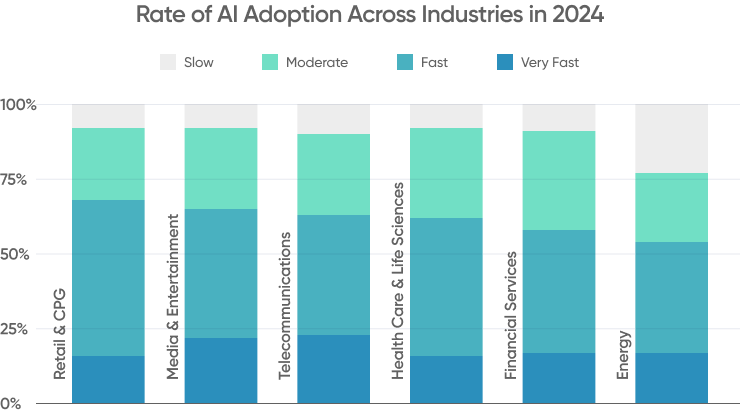
As you can see above, the rate of AI adoption varies across industries, but generally expectations are high for these technologies to produce meaningful gains in productivity. A report from AI Infrastructure reveals a strong sense of optimism among enterprises:
- 81% of survey respondents anticipate AI to elevate their industry’s efficiency by at least 25% in the next two years
- 33%+ of respondents are projecting an increase in efficiency of at least 50%
Significant investments in AI, deep learning, and quantum computing technologies are driving a "fast and dramatic" shift in IT spending, with Global 2000 organizations set to allocate over 40% of their core IT spend on AI-related initiatives by the end of 2024. This investment is expected to lead to a double-digit increase in the rate of product and process innovations.
8 steps to maximize enterprise AI transformation impact
Enterprise AI adoption rates are at an all time high, and it’s clear that AI technology is here to stay. This section outlines eight strategic steps to amplify the benefits of your AI transformation, ensuring that your enterprise not only keeps pace with technological advancements but also achieves significant competitive advantages:
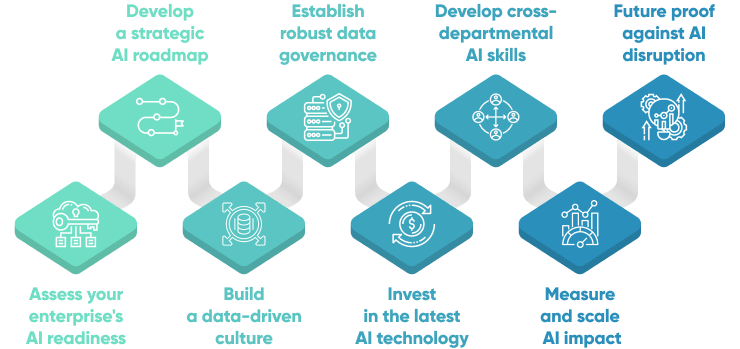
Assess your enterprise's AI readiness
While AI presents some compelling advantages to businesses, truly leveraging this technology effectively hinges on the strength of your data infrastructure and your organization's readiness for technological change, so begin your AI transformation efforts by assessing these two key areas:
Current data capabilities
Begin by examining your data quality and the processes governing data collection, storage, and management within your organization. Consider these factors:
- Data volume and variety: Ensure you have ample, diverse data types to train AI models effectively.
- Data accessibility: Data should be easily accessible to authorized parties, with structures in place that support efficient retrieval and analysis.
- Data governance: Strong governance policies are required to ensure data integrity, security, and compliance with regulations.
Understanding organizational AI maturity
Your company's experience and proficiency with AI will dictate the pace and success of AI adoption. To assess your organizational AI maturity, review the following aspects:
- Organizational culture: Assess the readiness of your organizational culture to adopt new technologies. A culture that values innovation, continuous learning, and adaptability is vital for integrating AI into business processes successfully.
- Previous AI projects: Reflect on any previous AI projects, or more generally, any recent digital transformation projects. This retrospective can highlight what your team has done well and where improvements are needed, providing valuable insights for future projects.
- Leadership and culture: The backing of your business leaders such as your chief information officer and CTO is crucial for navigating an AI transformation effectively. Additionally, fostering a culture that is open to change and innovation is equally important for integrating AI into your business operations effectively.
This initial step sets the stage for a successful transformation by identifying strengths and areas for improvement in two of the most foundational aspects of AI transformation within large organizations.
Develop a strategic AI roadmap
Building on your readiness assessment, craft a strategic AI roadmap that aligns AI initiatives with your business objectives. This roadmap serves as a blueprint, guiding the integration of artificial intelligence technologies with your business's core objectives, ensuring every initiative drives tangible outcomes and aligns with your strategic vision. Establishing specific AI goals reduces the risk of “AI for AI’s sake.”
To do this, begin by pinpointing critical business challenges and opportunities where AI can provide a competitive edge or operational efficiency. These challenges could be identified bottom up by managers of various verticals or they may be part of a top-down strategy from the CTO or VPs. For each identified challenge, set specific, measurable outcomes. These could range from increased sales conversions, reduced operational costs, to improved customer satisfaction scores. Establishing clear metrics allows for the direct alignment of AI initiatives with business success.
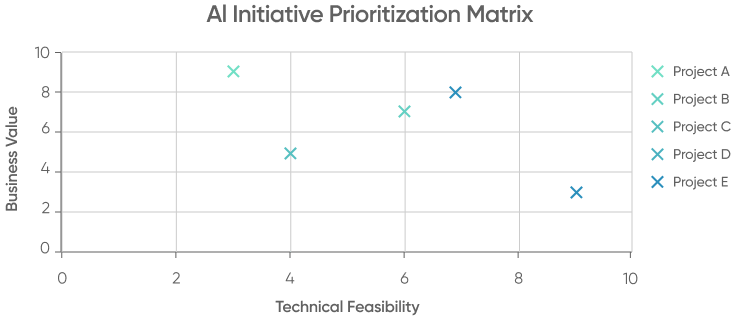
Build a data-driven culture
Harnessing the full potential of AI within enterprises extends beyond the mere availability of data; it demands the cultivation of a data-driven culture that permeates every level of the organization. This transformation demands an ecosystem where data is not only accessible but is also managed, understood, and utilized effectively across the organization. Achieving this requires a universal commitment to data literacy, ensuring that all members of the organization understand and leverage data in their daily operations.
To instill a vibrant data-centric culture, it's essential to actively involve key stakeholders in the AI transformation journey. Here are strategies to ensure their engagement:
- Assess data maturity: Assessing data maturity is pivotal for developing a data-driven culture, requiring a review of data management quality, integration, analytics sophistication, and governance within your organization. This evaluation informs a tailored strategy to progress from your current maturity level, focusing on foundational improvements or advanced analytics and data democratization based on specific needs and challenges.
- Identify influencers: Recognize and empower leaders within your organization who can serve as champions for the data-driven initiative. These influencers play a critical role in modeling and advocating for the value of a data-centric approach that is critical to see meaningful value from AI projects.
- Regular communication: Establish a routine of meetings and updates with stakeholders to share successes, lessons learned, and strategic visions for data-driven initiatives. Transparent communication fosters a sense of ownership and alignment with the data-driven goals.
- Tailored training: Elevating data literacy across the organization is fundamental. Implement training programs designed to meet the specific needs of different departments, enabling practical application of data insights beyond the IT department. This approach encourages a hands-on understanding of data’s role in enhancing operational efficiency and making data driven decisions.
Learn More: Data Engineering Services

Establish robust data & AI governance
Effective data governance is critical in leveraging the power of AI within your enterprise. It requires a strategic and meticulous approach to managing data access, quality, and security.
Implementing data security protocols
Your data is an asset that requires strong protection. Begin by determining sensitive data and employing encryption techniques to secure it in transit and at rest. It's crucial to establish access controls based on roles and responsibilities, ensuring that only authorized personnel can interact with the data.
Consider regular security audits to test and reinforce these measures, as well as rapid incident response plans in case of breaches.
Ensuring ethical AI practices
Incorporating ethical considerations into your AI systems is non-negotiable. This starts with transparent data sourcing; you must obtain data through fair and legal means, respecting privacy and consent. It's imperative to perform regular bias assessments and remediation to prevent discriminatory practices.
Ensure algorithmic transparency by keeping your AI's decision-making processes understandable to stakeholders, thereby enhancing trust and accountability in these systems.
Invest in the latest AI technology
There are generally 3 paths enterprises can take when investing in AI technology. From lowest effort and impact to greatest:

Option 1: Leverage AI-enabled features within existing software
Enterprises can enhance their current operations by activating AI features available in software they already use. This approach is cost-effective and minimally disruptive, allowing businesses to gain immediate benefits from AI. A few examples include:
- CRMs like Salesforce Einstein provide advanced AI capabilities across its customer relationship management (CRM) platform, enhancing analytics, customer service, and marketing automation.
- Business productivity tools like Microsoft 365 Copilot, Google Duet AI enhance productivity across Microsoft 365 apps and offer advanced data interpretation, content creation, and collaboration.
- Customer service management and ticketing tools like Zendesk provide AI-powered support to customer service agents.
- Atlassian, which owns Jira, Confluence, and Trello incorporates AI in its software suite to optimize project management, automate tasks, and improve decision-making processes.
Option 2: Integrate new “out of the box” AI software
There are new AI solutions popping up daily to solve nearly every business challenge imaginable. In the enterprise, the key is to find solutions that will integrate with your existing software systems, allow for sufficient customization, and enterprise-level access controls and security. A few key solutions of note are:
- ChatGPT Enterprise: ChatGPT with enhanced enterprise security, speed, and control, along with access to a library of GPTs that can be used for specific applications.
- Avaamo: Platform that allows enterprises to quickly deploy AI-powered virtual assistants to deliver industry-specific customer and partner support
- Amazon Comprehend Natural language processing (NLP) service that uses machine learning to uncover insights and connections in text
- Dataiku: BI tool powered by AI designed to systemize the use of data to deliver data and advanced analytics at scale
- JasperAI: Well-established generative AI platform for business that helps your team create content tailored for your brand 10X faster, wherever you work online.
Option 3: Build a custom (or semi-custom) AI solution
While this option requires more significant time and financial investment, it promises highly optimized performance and a closer alignment with the company's long-term vision. Consider platforms with built-in model management and monitoring features to keep your AI implementations organized and under control. A few options of note are:
- NVIDIA’s Enterprise AI “Operating System”: End-to-end, cloud-native software platform that accelerates data science pipelines and streamlines development and deployment of production-grade AI applications
- DataRobot: An automated machine learning platform that allows users to build and deploy machine learning models quickly and easily.
- IBM Enterprise AI solutions: IBM can help you apply AI to a wide range of use cases, boost AI-powered productivity and modernize applications across industries
- Microsoft’s “chat with your data” solution accelerator: offers a template for end-to-end RAG pattern implementation using the "Retrieve-then-read" interaction pattern. This solution accelerator combines the GPT model in Azure OpenAI Service with an Azure AI Search index generated from your data, integrating them into a web application to deliver a natural language interface for search queries.
In every case, you should have a clearly defined use case, understanding of how it will integrate into your existing systems, and provide long-term scalability, security, and robustness that you’d expect from any enterprise-grade solution. By meticulously planning integration, you can minimize disruptions and lay the groundwork for a comprehensive AI ecosystem.
Develop cross-departmental AI skills
The integration of AI into business operations is not just a technological shift but a transformation that requires a new paradigm of in-the-job training. Despite the potential of AI to substantially enhance labor productivity across the economy, the reality remains that only 1 in 10 of employees have been offered AI training in the past year. This gap highlights a pressing need for inclusive and extensive training programs that cater to various organizational levels, ensuring a workforce that is both proficient in AI and capable of adapting to its evolving landscape.
In this vein, to leverage AI's full potential, enterprises must focus on two key areas:
Hiring for technical AI skills
Identifying and recruiting talent with specialized AI skills is crucial for driving your AI transformation forward. The specific expertise required will vary depending on the scope of your AI initiatives and the complexity of the data and custom development involved. Key roles might include data scientists, machine learning engineers, and AI researchers, each playing a pivotal role in shaping the AI capabilities of your enterprise.
Upskilling existing workforce
Equally important is the task of upskilling your current employees. By implementing structured training programs tailored to different roles, you can cultivate an AI-savvy workforce ready to tackle the challenges and opportunities presented by AI technologies. These training initiatives should focus on three core areas:
- Foundational AI concepts: Offering AI literacy programs to all employees will help demystify AI and foster an organizational culture that embraces technological innovation.
- Technical skills development: For IT professionals and others directly involved with AI implementation, specialized training in AI technologies and data analysis tools is essential.
- Ethical AI use and governance: Promoting an understanding of ethical AI practices and governance across departments will ensure responsible and fair use of AI technologies.
Leveraging online courses, workshops, and certifications can provide your workforce with the flexibility to learn at their own pace while staying abreast of the latest developments in AI. This approach not only enhances individual capabilities but also strengthens the organization's collective expertise in AI.
Measure and scale AI impact
As AI initiatives progress, it's essential to pivot towards evaluating their performance through Key Performance Indicators (KPIs) aligned with your business goals. This step is vital for ensuring that AI deployments are not just operational but are also contributing significant, ongoing value to your organization. Effective measurement and scaling of AI impact are crucial components of this process, guaranteeing that AI technologies are fulfilling their intended purpose and continuously driving your enterprise forward.
Tracking AI-driven KPIs
To gauge the success of your AI initiatives, you must identify and monitor key performance indicators (KPIs) that are aligned with business objectives. Examples may include:
- Efficiency gains: Track metrics like transaction time reduction or increased throughput to quantify productivity improvements.
- Accuracy improvements: Measure error rate declines in processes like quality control or forecasting.
- Revenue enhancement: Look for increases in cross-sell/up-sell rates or new customer acquisitions directly linked to AI utilization.
Expanding AI use cases
Once initial AI projects yield positive outcomes, it's critical to identify other areas within the enterprise where AI can drive similar or greater value. Specifically, focus on:
- Expand existing AI projects: Scale successful AI implementations by extending their application to additional departments or processes that could benefit from similar enhancements. For instance, an AI model that improves supply chain efficiency in one unit could be adapted to streamline inventory management in another,
- Replicate best practices: Identify the key factors contributing to the success of initial AI projects and apply these insights to new initiatives. This could involve adopting a specific AI framework, methodology, or technology stack that has proven effective.
- Pilot cutting-edge AI applications: Invest in pilot programs that explore innovative AI applications poised for growth. For example, leveraging generative AI for creating immersive virtual reality experiences could offer a competitive advantage in customer engagement or training solutions. By focusing on areas expected to see significant development in the next 6-12 months, enterprises can position themselves as leaders in adopting transformative technologies, ready to capitalize on emerging trends.
Future-proofing against AI disruption
Once you’ve developed AI solutions or launched AI initiatives, it’s critical to future-proof against AI disruption and maintain a competitive edge. To achieve this, consider the following strategies:
- Anticipate enterprise AI trends: Monitor real-time data and analytics to identify shifts in consumer behavior and market dynamics. Collaborate with academic and industry research groups for early insights into AI advancements, leveraging industry reports, conferences, and networking events.
- Invest in continuous learning: Embrace the reality that digital transformation is an ongoing journey, demanding continued education for your team. Invest in educational resources that enable employees to explore AI applications, including immersive technologies and edge computing. This approach ensures that your workforce is well-versed in the latest technological advancements, empowering them to identify and leverage innovative use cases that drive the organization forward.
- Support employee-driven pilots: Encourage and back initiatives led by employees to explore and experiment with this new technology. By fostering an environment where experimentation with new technologies like edge computing is supported, you'll tap into the collective ingenuity of your team, leading to transformative ideas and applications.
By focusing on these strategies, you can mitigate the risks and capitalize on the opportunities presented by AI disruption.
Conclusion
If you're looking to develop a custom AI solution or need help navigating your AI transformation, consider our AI development company. Our team will partner with you to build a comprehensive AI strategy, help you select the most suitable AI technologies, and integrate them directly into your existing tech stack for a sustainable competitive advantage.

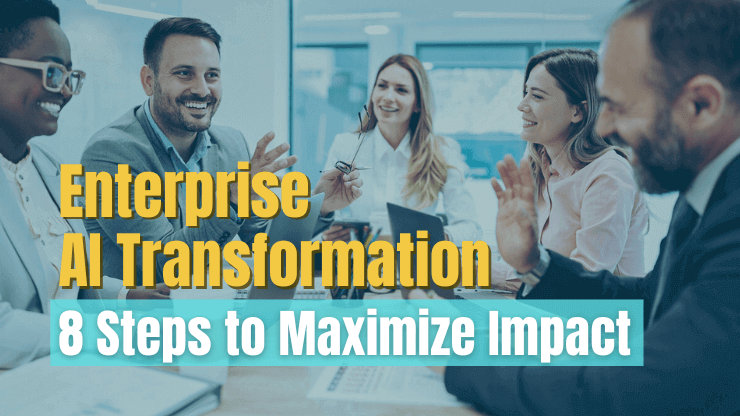
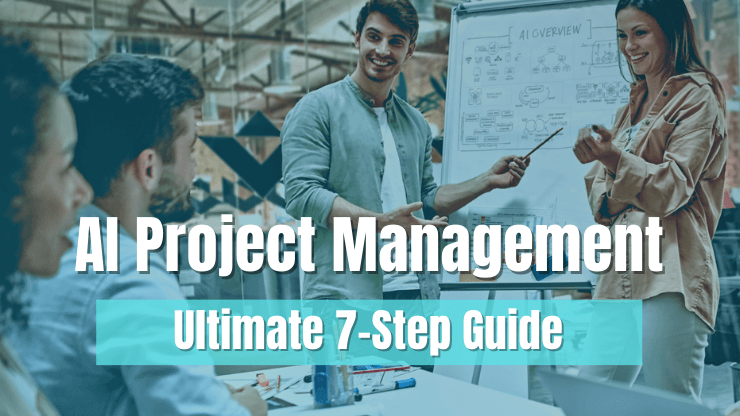
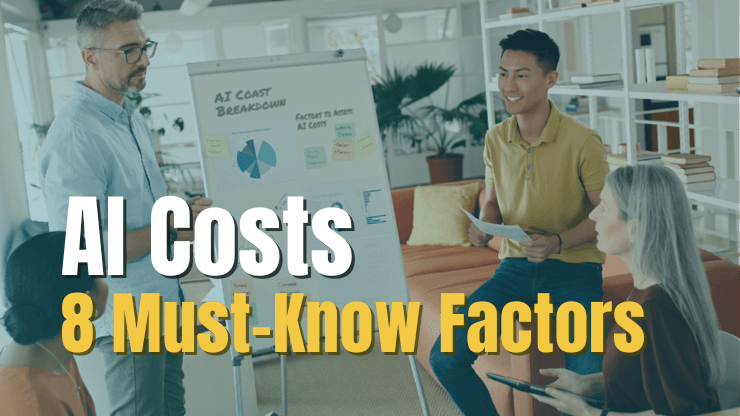
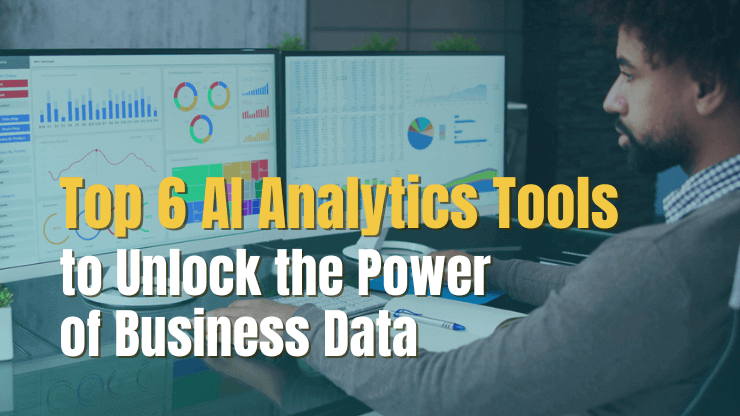
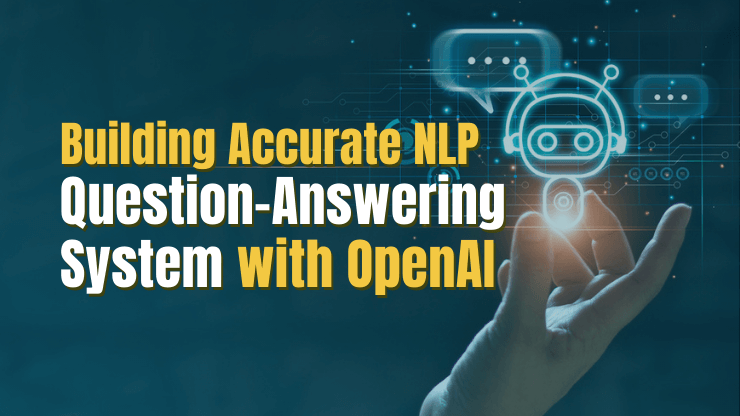
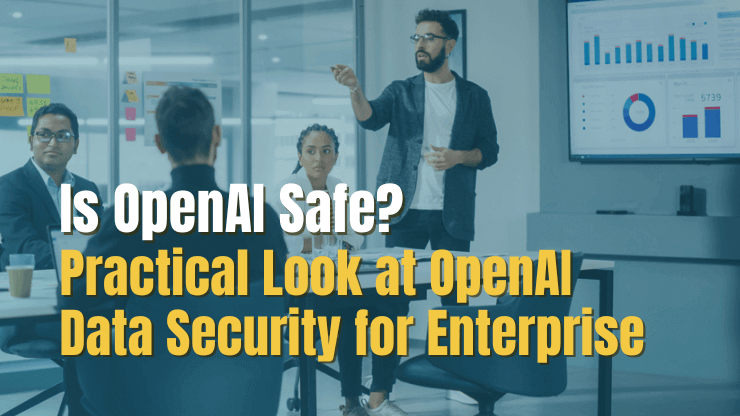
![8 Best AI Computer Vision & Object Detection Tools [2023 Review]](/uploads/blog/ai-computer-vision-tools/ai-computer-vision-tools.png)